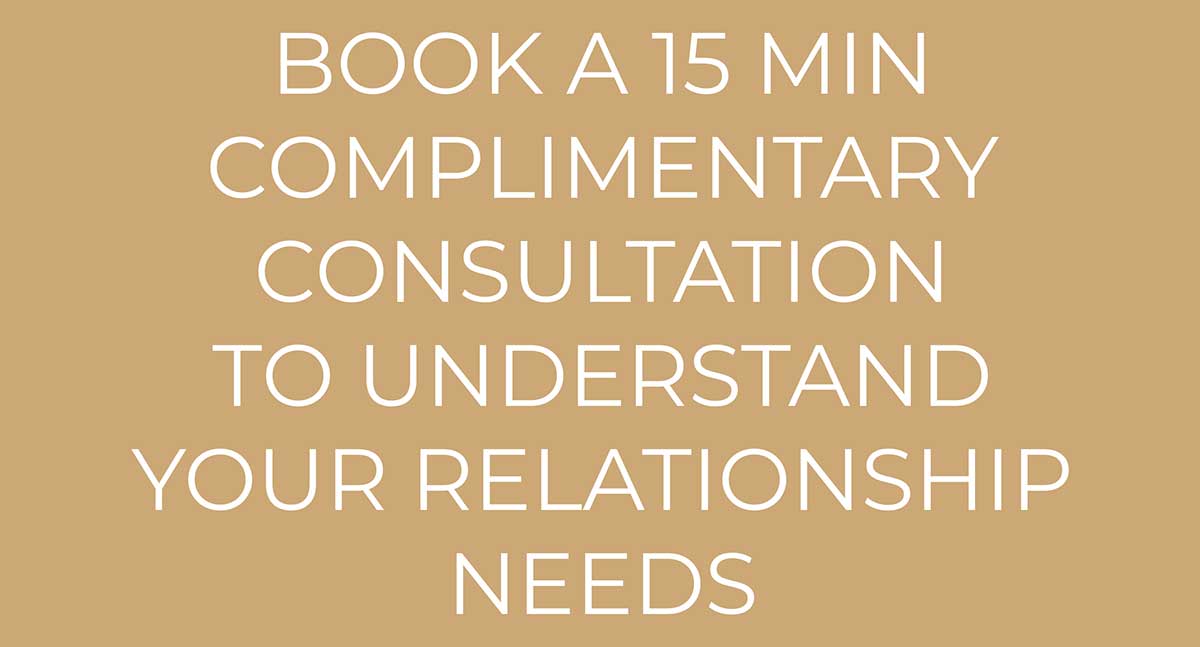
An attachment style dictates mostly how an individual relates to other people and is developed during the initial stages of our life as a child. They are established during infancy from interactions with our parents or primary caregivers. However, the style of attachment we develop as a child will stay with us all throughout our life unless we become aware of it, and work to change it by working with a professional counselor, therapist or credentialed coach.
Our attachment style will play out in all of our social relationships and particularly in our loving relationship. To put it in another way, the type of attachment we developed with our parents or primary caregivers, will reflect in our relationships and loving relationships as adults.
Attachment styles are often classified as secure and insecure attachment styles. An ambivalent-resistant attachment style is more of an insecure and unhealthy attachment style. It is estimated more than 50% of people have insecure attachment styles, but they can be changed with work.
What is the Ambivalent-Resistant Attachment Style?
The ambivalent-resistant attachment style is an insecure and unhealthy attachment style that is developed when a child grows up in an unpredictable, argumentative household. As a child they have had to defend themselves in aggressive conversations, or argue to get their point across to feel seen, heard and understood. Due to these early childhood experiences, they often develop issues with authority.
They are argumentative, confused and not securely attached to their parents or primary caregivers. In their early years they have struggled to form an emotionally secure attachment with their parents. The ambivalent-resistant attachment style usually leads to feeling a lack of a secure base in any relationship, and their loving relationship in the future when they become adults. They will often push people away, and commonly use black and white, or right and wrong polarized thinking.
What causes the Setup of an Ambivalent-Resistant Attachment Style?
An ambivalent-resistant attachment style is often a result of a childhood in which love and affection are inconsistently provided by parents, and the environment is constantly argumentative. The infancy period will have been dominated by the child feeling confused, unsafe and defensive, and desperately looking for love and affection. They will have experienced some love and affection, but their experience of it will be fragile with a sense that it might vanish at any moment without warning.
They will have remained unsure of receiving love and affection throughout their childhood. This drives a fear of abandonment in the child. They didn’t feel safe in their infancy as their experience of love and affection was too inconsistent, instead they experienced more upset, anger or aggression. The child can develop a sense of self that they are not good enough and beliefs to accompany this in their adult life.
What is it like to have a Loving Relationship with a Person with an Ambivalent-Resistant Attachment Style?
Someone with an ambivalent-resistant attachment style constantly searches for proof that they are loved in their loving relationship. Due to this they may also try to prove that they are lovable with acts and deeds. Yet, they can remain distrustful that they are loved by their partner, and so overly seek validation in a loving relationship.
Someone with an ambivalent-resistant attachment style is easily triggered and angered. They can also be very argumentative with a strong need to get their point across as being right.
The person dating or with an ambivalent-resistant attachment style-based personality can feel alienated in a loving relationship, jeopardizing the stability of the loving relationship. An ambivalent-resistant attachment-based personality might too often respond with upset and anger, due to feeling insecure and unloved.
There are a few signs that can help both parties to understand if an ambivalent-resistant attachment style is being played out in their loving relationship. Some are:
- Ambivalent-resistant individuals seek reassurance in a loving relationship constantly. They can expect reassurance in multiple ways such as text messages, calls, words of validation, affection, signs of approval and more.
- They are easily hurt and angered.
- They can struggle with constant insecurity in a loving relationship.
- They can find it difficult to emotionally self-regulate without intervention from their loving partner.
- They tend to over-interpret unnecessary details in the loving relationship.
- They may make threats about ending the loving relationship.
- They often have issues in establishing intimacy and closeness in a loving relationship.
- They may exhibit extreme behavior of self-importance in the loving relationship due to requiring validation that they are lovable.
Can an Ambivalent-Resistant Individual have Successful Relationships and a Successful Loving Relationship?
Individuals who have an ambivalent-resistant attachment style often find it difficult to sustain healthy relationships. They tend to sabotage and destroy relationships. The good news is it is quite possible to change this attachment style with the professional help of a skilled counselor, therapist or credentialed coach.
With the support of an experienced professional, and commitment from the individual, it is possible to change and heal an ambivalent-resistant attachment style. In general, the focus to work through this attachment style from a professional is to rewire neuro-synaptically any childhood adverse experiences to be positive, work to develop and encourage trust in self and to develop renewed communication skills, and to develop a social personality.
Professional work with a skilled counselor, therapist or credentialed coach can overtime shift and transform an ambivalent-resistant attachment style to be able to form secure attachments in relationships and to develop a secure attachment in a loving relationship.
How does an Ambivalent-Resistant Attachment Style Affect or Benefit an Individual?
Attachment styles have benefits. Individuals with an ambivalent-resistant attachment style can be very strong and dominant in business relationships, and thus can also be overprotective. They can sometimes have a belief of ‘I must remove danger’ so they can be very protective of someone who is vulnerable, that is their loving partner. They are, however, easily triggered.
When they are accepted and reassured they can go above and beyond to love their partner, as when consistently reassured and appreciated their confidence grows. However, when they do get emotionally triggered they can quickly shift to verbal aggression. Their defensive responses are a means to try to feel safer when triggered in a loving relationship.
People with ambivalent-resistant attachment styles can struggle to be in and remain in their body, and this can hinder sexual interactions and sexual activity.
This is partly due to an elevated stress response. Someone who is ambivalent-resistant can have higher cortisol levels, and stronger cortisol reactivity. This high cortisol is also experienced with an anxious attachment style. Higher cortisol reactivity drives the person to be more reactive, but this can make some people very determined and committed lovers.
An ambivalent-resistant attachment style personality can be very motivated to build a life with the person they love, and to do the right thing for their loving relationship. They need a loving partner in their life, and that person means everything to them.
How can you Build a Better Loving Relationship with an Ambivalent-Resistant Partner?
Though it may take some effort to work with this attachment style, you can build a happy loving relationship with an ambivalent-resistant partner. Work to understand and acknowledge the reasons your partner has this attachment style, which will be related to their parenting experience they received, or transgenerational trauma.
You can help an ambivalent-resistant attachment-based person to feel more secure in a loving relationship by providing:
Reassurance – By constantly reassuring your partner, you can prevent the individual from experiencing negative thoughts, feelings and emotions about the relationship. Try to stay connected with them through frequent phone calls, texts, and positive experiences and interactions.
Develop communication skills that resolve conflict, and during conflicts or disagreements, work to reassure your partner these conflicts are not the end of the relationship.
Consistency – If you are with an ambivalent-resistant individual, you should acknowledge that they constantly need to feel seen, heard, and understood. By showing love and affection consistently, you can assure them that they are valued in the loving relationship.
Prompt Responses – Do not keep your partner waiting for a reply to important messages as they might over-interpret or overreact. Make sure you show up on time for dates or meetings. When you keep them waiting for long, they might feel a lack of respect or even abandonment. Keep in mind that ambivalent-resistant attachment-based individuals fear abandonment.
Adapt – When you are with an ambivalent-resistant partner, it is essential to educate and remind yourself about their attachment style. Don’t try to fix the individual. Rather you should understand and acknowledge that the underlying issue is the lack of love and care they needed in the initial years of their life. Over time their sense of safety will grow with you, with consistent, positive, caring interactions. Work with a professional counselor, therapist or credentialed coach to develop your relationship intelligence and relationship skills, if help is needed.
Can someone Change from an Ambivalent-Resistant Attachment Style to a Secure Attachment Style?
It is possible to transition from an ambivalent-resistant attachment style to a secure attachment style. The more you can understand yourself, the better you can correct your behavior, interactions and improve. Here are a few tips to help someone to develop secure attachments, and to move toward having a secure loving relationship:
Improve your Emotional Intelligence – Study material on intrapersonal communication and work to stay aware of your emotional needs. Develop better self-control over reacting when your emotional needs are not met, and strengthen your relationships by developing greater communication skills.
Be with Securely Attached Individuals you Respect – Ideally, you should engage in relationships with people who are more secure and who have secure attachment styles. It will help to avoid insecure people who will drive negative thinking and negative interactions. Work for people or companies you respect. Build healthy relationships.
Work with a Professional – Childhood adverse experiences often lead to insecurities and fear, confusion or doubt in adulthood. Work with a professionally skilled counselor, therapist or credentialed coach to work through and overcome any issues.
Summing Up
Individuals who are denied love and care when they need it in childhood, as well as having argumentative parents tend to develop an ambivalent-resistant attachment style as adults. They find it difficult to develop happy and healthy relationships due to their reactivity. They can experience difficulty in establishing an emotional connection with their loving partner. However, with education, greater awareness, effort and commitment and professional support, an ambivalent-resistant attachment style can transition to a secure attachment style over time.
No matter your attachment style, it is possible to change and succeed with love by working on yourself, and working with the support of someone professional and highly skilled to guide you.



